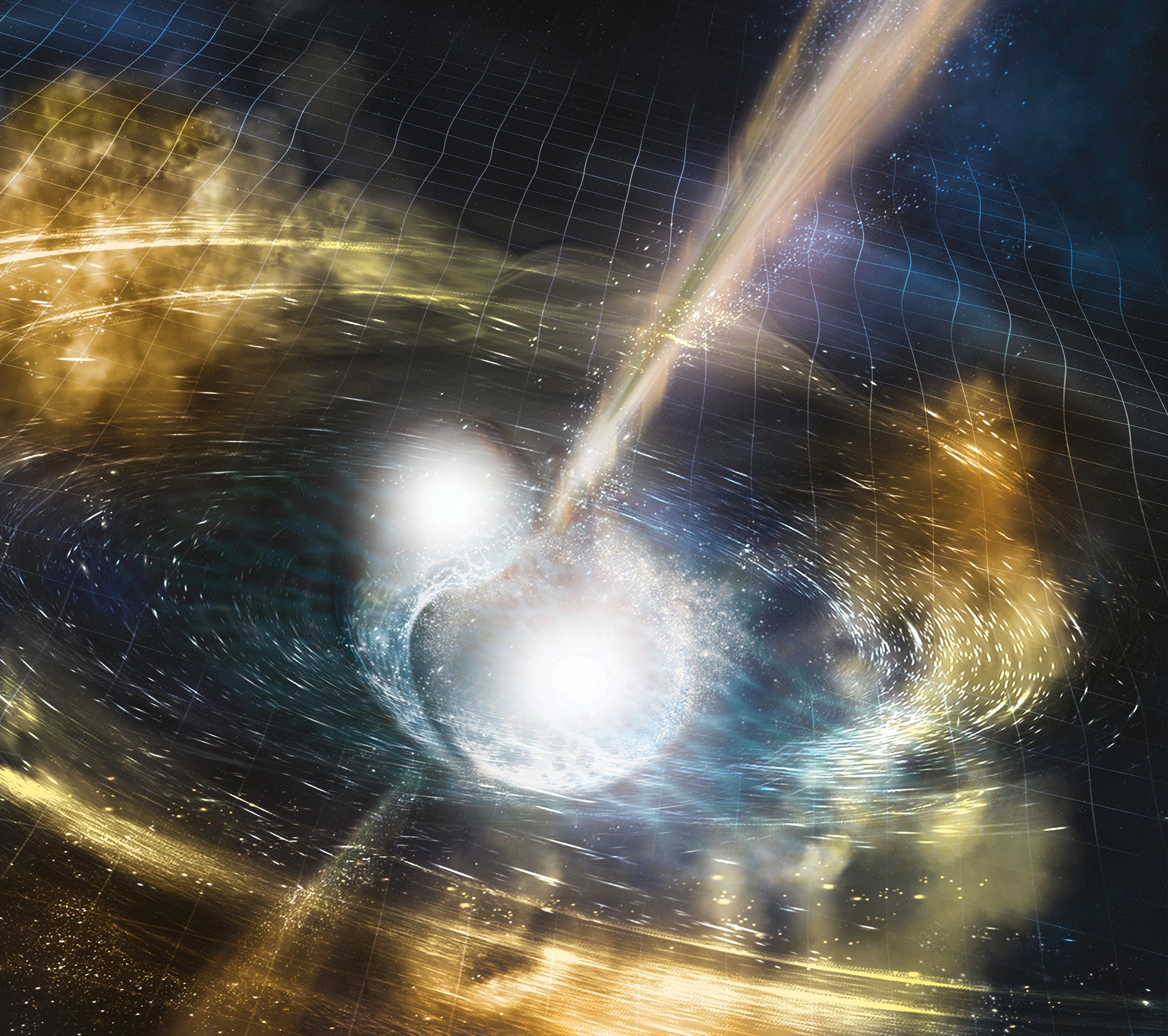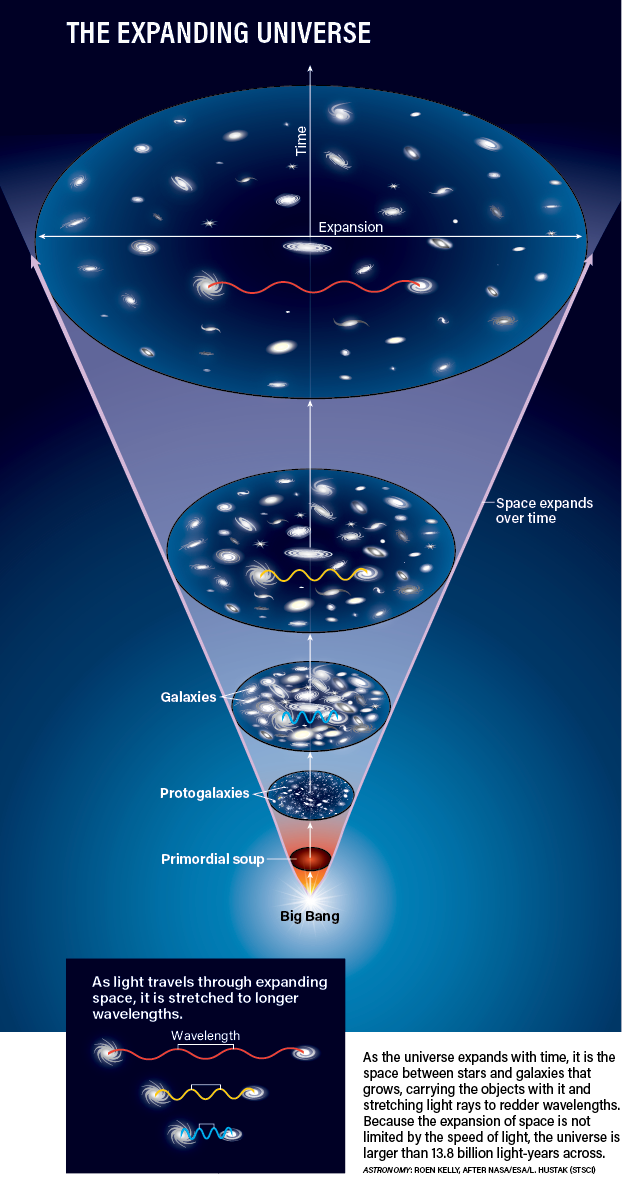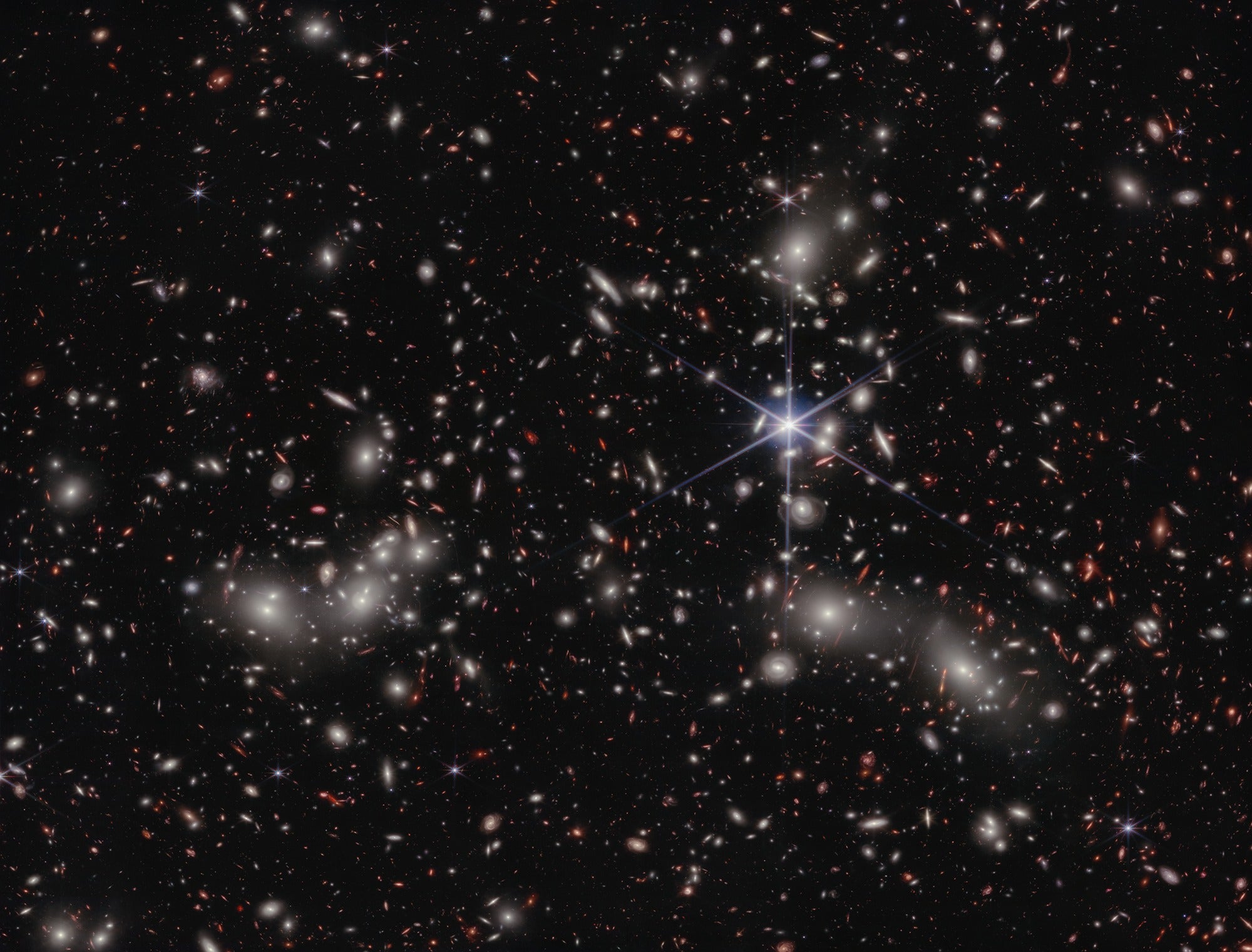
Does gravitational attraction travel through space at a measurable rate, or is it instantaneous?
Thomas L. Richie
Rockville, Maryland
In Isaac Newton’s theory of gravity, the gravitational attraction between two objects is proportional to the product of their masses divided by the distance between them squared, and this attraction acts with no delay or lag. From this, you can derive all sorts of characteristics of celestial objects, including the motion of planets around the Sun. These orbital predictions matched observations perfectly, which led us to believe for centuries that gravity traveled instantaneously.
All this changed at the start of the 20th century with Einstein’s theory of special relativity, which states that the distances between objects and the passage of time depend on the relative motion of an observer. This is inconsistent with Newton’s gravitational law and the observed orbits of the planets. This led Einstein to develop general relativity, which describes both relativistic motion and gravity. In general relativity, gravity travels at the speed of light instead of instantaneously. Once relativistic effects are accounted for, general relativity also accurately predicts the orbits of planets around the Sun.
Einstein published the general theory of relativity in 1915 and since then, it has spectacularly passed every test we have thrown at it. The simplest and most convincing observation that gravity travels at the speed of light came in 2017, when both gravitational waves and light were observed from a merger of two neutron stars. Despite traveling more than 100 million light-years, the two signals arrived at Earth only 1.7 seconds apart! This means the speed of light and the speed of gravity differ by no more than 1 part in a quadrillion — in other words, they differ by no more than 0.0000000000001 percent.
Sam Young
Marie Skłodowska-Curie Research Fellow, Lorentz Institute, University of Leiden, Netherlands









